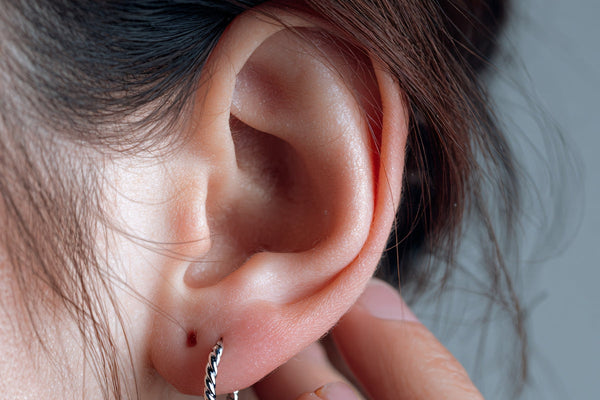
A perforated eardrum, also known as a ruptured eardrum, is a small hole or tear in the thin tissue that separates your ear canal from your middle ear. While it may sound serious, this condition is quite common and often heals naturally within a few weeks.
At Leightons, we understand how worrying ear pain, discharge, or hearing changes can feel. Our friendly audiologists are here to check your ear health safely, explain what’s happening, and guide you toward the right treatment and support.
What is a perforated eardrum?
Your eardrum (tympanic membrane) is a delicate layer of tissue that vibrates when sound waves reach it, helping you hear clearly. It also protects the middle ear from bacteria, water, and debris.
When the eardrum becomes torn or punctured, sound transmission is affected, and the middle ear is left more vulnerable to infection. The size of the perforation can vary - from a small pinhole to a larger tear - but most heal naturally without long-term problems.
What causes a perforated eardrum?
Several different factors can lead to a perforated eardrum, including:
- Ear infections: Fluid build-up from a middle ear infection can cause pressure to rise until the eardrum ruptures.
- Sudden pressure changes (barotrauma): During air travel, scuba diving, or rapid altitude changes.
- Injury: Inserting objects such as cotton buds into the ear canal.
- Loud noises: Sudden explosions or blasts can damage the eardrum.
- Head trauma: A blow to the head or ear may cause a rupture.
Most perforations are minor and heal on their own, but it’s important to get your ears checked to prevent infection or further damage.
Common symptoms of a perforated eardrum
The symptoms of a perforated eardrum can vary depending on the cause and severity. You may notice:
- Sudden sharp ear pain, which may ease once the eardrum ruptures
- Hearing loss or muffled sounds
- Fluid or pus discharge from the ear
- Tinnitus (ringing or buzzing sound)
- Dizziness or balance issues
If you experience these symptoms, it’s best to have your ear examined by a professional to ensure it heals properly and to avoid complications such as infection.
How is a perforated eardrum diagnosed and treated?
A perforated eardrum can be diagnosed through a simple otoscope examination - a quick, painless way for an audiologist or GP to look inside your ear.
Treatment depends on the size and cause of the tear:
- Small perforations usually heal naturally within a few weeks.
- Antibiotic ear drops or oral medication may be prescribed if infection is present.
- Avoid getting water in the ear until it has healed fully.
- Never insert cotton buds or objects into the ear canal.
- In persistent cases, surgery (myringoplasty) may be needed to repair the eardrum and restore hearing.
Most people recover completely, and hearing usually returns to normal once the eardrum has healed.
Recovery and self-care tips
Taking care of your ears during recovery helps ensure proper healing:
- Keep your ear dry when showering or bathing. You can use a cotton ball coated with petroleum jelly as protection.
- Avoid swimming or flying until your healthcare provider says it’s safe.
- Manage pain with over-the-counter pain relief, if needed.
- Follow up with hearing checks to confirm your hearing has returned to normal.
Healing time can vary from a few days to several weeks, depending on the size of the tear and whether infection was present.
How Leightons can help
At Leightons, we provide safe and thorough ear health checks to detect signs of eardrum damage, fluid build-up, or infection. Our experienced audiologists can:
- Examine your ears using specialist tools to check for perforations.
- Perform hearing tests to assess any hearing changes.
- Refer you to your GP or ENT specialist if medical treatment or surgery is required.
- Offer follow-up hearing assessments after healing to ensure full recovery.
We’re here to help you protect your hearing, support recovery, and feel confident in your ear health.
Book your free hearing assessment today and take the first step toward clearer, healthier hearing.







